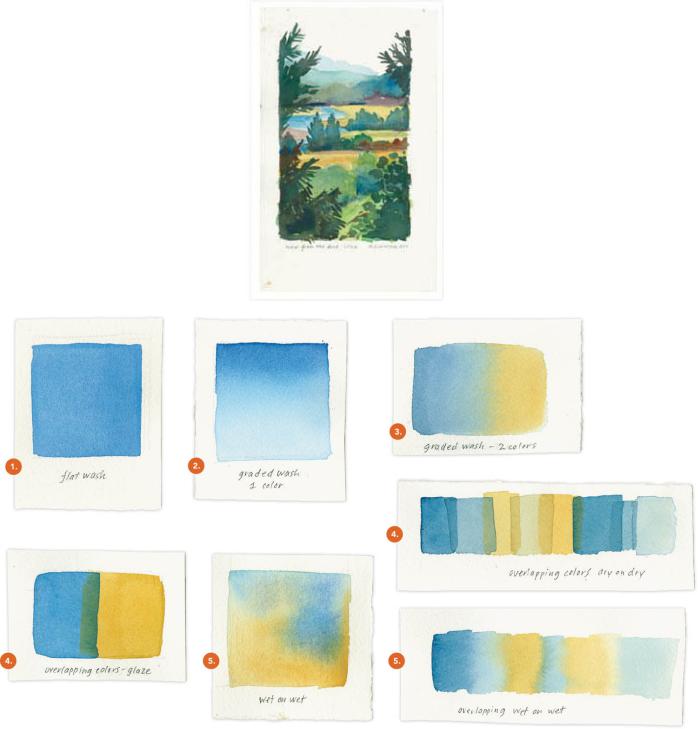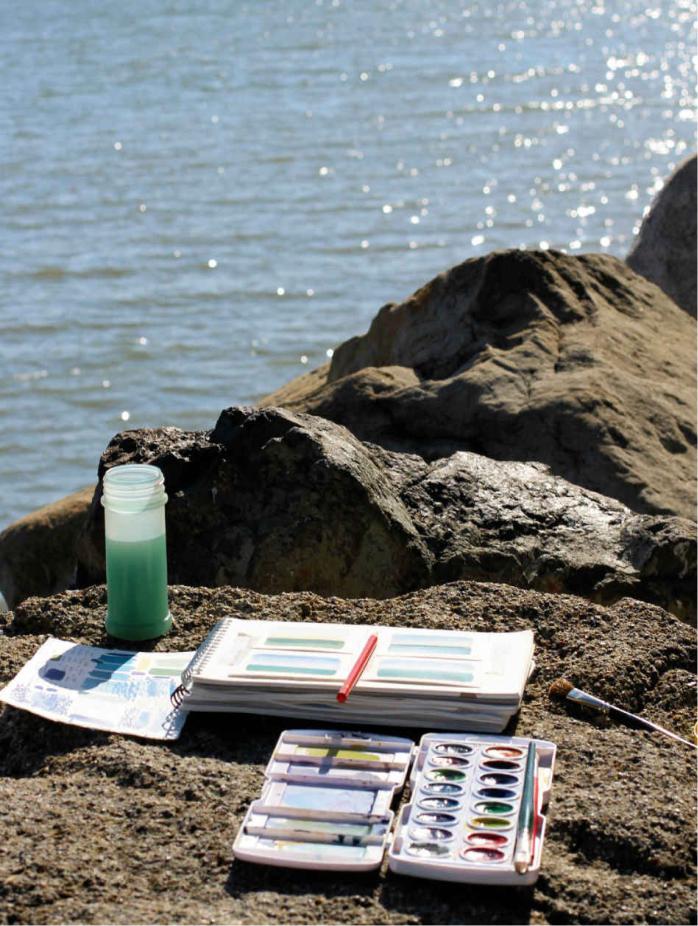
- •Acknowledgments
- •Introduction
- •Landscape
- •Ocean/Sky
- •Light
- •Wildflowers
- •Fog, Mist, and Haze
- •Forest, Lichen, and Moss
- •The Colors of Point Reyes National Seashore
- •Materials
- •Essential Equipment
- •Optional Equipment
- •Preparation
- •Paper Size & Grid
- •Pigments & Color Theory
- •Technique
- •Brush Marks
- •Painting
- •A Note on the Photographs
- •Habitat
- •Light
- •Weather
- •Seasons
- •Seasons: A Year in Color
- •Antigua, Guatemala
- •Lake Atitlán, Guatemala
- •Pátzcuaro, Mexico
- •Luxor, Egypt
- •The Dead Sea, Jordan
- •Petra, Jordan
- •Lake Issyk-Kul, Kyrgyzstan
- •Newport, Pennsylvania
- •Barney’s Joy, Massachusetts
- •Sacred Valley, Peru
- •Dominica, West Indies
- •Isle of Skye, Scotland
- •Inverness, Scotland
- •Mitchell, Oregon
- •New York, New York
- •San Francisco, California
- •Portland, Oregon
- •Big Picture
- •Detail
- •Sky Patch
- •Terrain
- •Rocks
- •Water
- •Color Walk
- •Color Memory
- •Naming Colors
- •Color Mixing
- •Primary and Secondary Colors
- •Tertiary Colors
- •Analogous Colors
- •Complementary Colors
- •Value or Tone
- •Color Temperature
- •How Many Greens are there?

TECHNIQUE
Brush Marks
Get to know your brushes and explore the marks they make. Hold the brush lightly; think of it as an extension of your hand. Use large brushes to encourage a sense of freedom. Whether a square or a line, thin or fat, blob, blip, or spatter, making marks is an expressive part of painting—your vocabulary. Marks contain energy: some are quick and gestural while others can be slow and detailed. Some marks are brimming with pigments while others hold only trace amounts of color. Use a lot of water and lots of pigment to explore a variety of marks.
Painting
Watercolors are both evocative and surprising. Embrace their dynamic and spontaneous nature, as they lend to painting quick impressions. Transparent layering and overlapping of colors can create a multitude of subtle effects.
Make sure your paintbrush is clean before you reach for another color (blot on a paper towel).

1. Flat (one-color) wash
Dip your brush in water, pick up some pigment, and lay it down on the page. For the next stroke, pick up more water and pigment and overlap the edge of the wet mark you have just painted. Tilt the paper as you apply the color. To overlap colors, apply a second pigment over the dry wash.
2. Graded wash
Start with a dark band of color. With each stroke, use more water to lighten the color as you go down the page.
3. Two-color graded wash
On damp paper, lay a band of color on one side and then a band of color on the other side, and let the colors run into one another in the middle.
4. Glazing
Apply a thin layer of color over a dry wash to produce a new color.
5. Wet on wet
Wet the paper with your brush, wait a moment, then drop in colors from a brush charged with concentrated paint.

